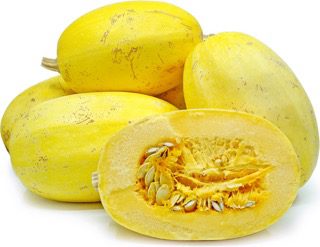

Spaghetti squash, also known as vegetable spaghetti, is a nutritious fruit that can be added to your dog’s diet. This oblong-shaped squash originated from North America and has been used in various cuisines around the world. It is abundant during the fall season, and you can easily find it in grocery stores and farmers’ markets.
Spaghetti squash is a great source of vitamin A, vitamin C, and beta-carotene, which can boost a dog’s immune system and act as antioxidants. It also contains essential minerals like magnesium, potassium, and iron that support various organ functions. The high fiber content in spaghetti squash promotes good digestion and urinary health. Additionally, the omega-3 fatty acids in spaghetti squash provide anti-inflammatory effects.
The skin and seeds of spaghetti squash can pose choking hazards and may be difficult for dogs to digest. The hull of the seeds can also cause blockages in the digestive tract.
To prepare spaghetti squash for your dog, remove the skin and seeds before cooking. Boil, steam, or roast the squash without seasoning. It is important to serve spaghetti squash to your dog in moderation as an occasional treat.
Spaghetti squash can be a healthy addition to a dog's diet as it is packed with vitamins, minerals, and fiber. However, it is important to remove the seeds and skin before feeding it to your dog to prevent choking hazards.
Spaghetti squash contains various vitamins and minerals that benefit dogs' health. Its high fiber content aids in digestion and helps prevent constipation. The vitamins and antioxidants in spaghetti squash boost dogs' immune systems and protect their cells from damage. Additionally, the anti-inflammatory effects of omega-3 fatty acids are beneficial for dogs with arthritis or joint pain.
However, the skin and seeds of spaghetti squash can be hazardous to dogs. Choking hazards and digestive blockages can occur if not removed before feeding. Always remove the skin and seeds of spaghetti squash before cooking and serving it to your dog.
Spaghetti squash is an affordable and accessible fruit, making it a great addition to your dog's diet. To serve spaghetti squash, boil, steam, or roast it without seasoning. You can also mix it with your dog's regular meal or use it as a low-calorie treat.
If spaghetti squash is not your dog's favorite, you can try other vegetables like sweet potatoes or carrots. Green beans and peas are also great alternatives if you want to add more fiber to your dog's diet.
Have you tried feeding your dog spaghetti squash? How did they enjoy it? As always, consult with your veterinarian before introducing any new food to your dog's diet.
Remember to always prioritize your furry friend's health and well-being when choosing their meals. A little bit of variety and nutrition can go a long way in keeping them happy and healthy.